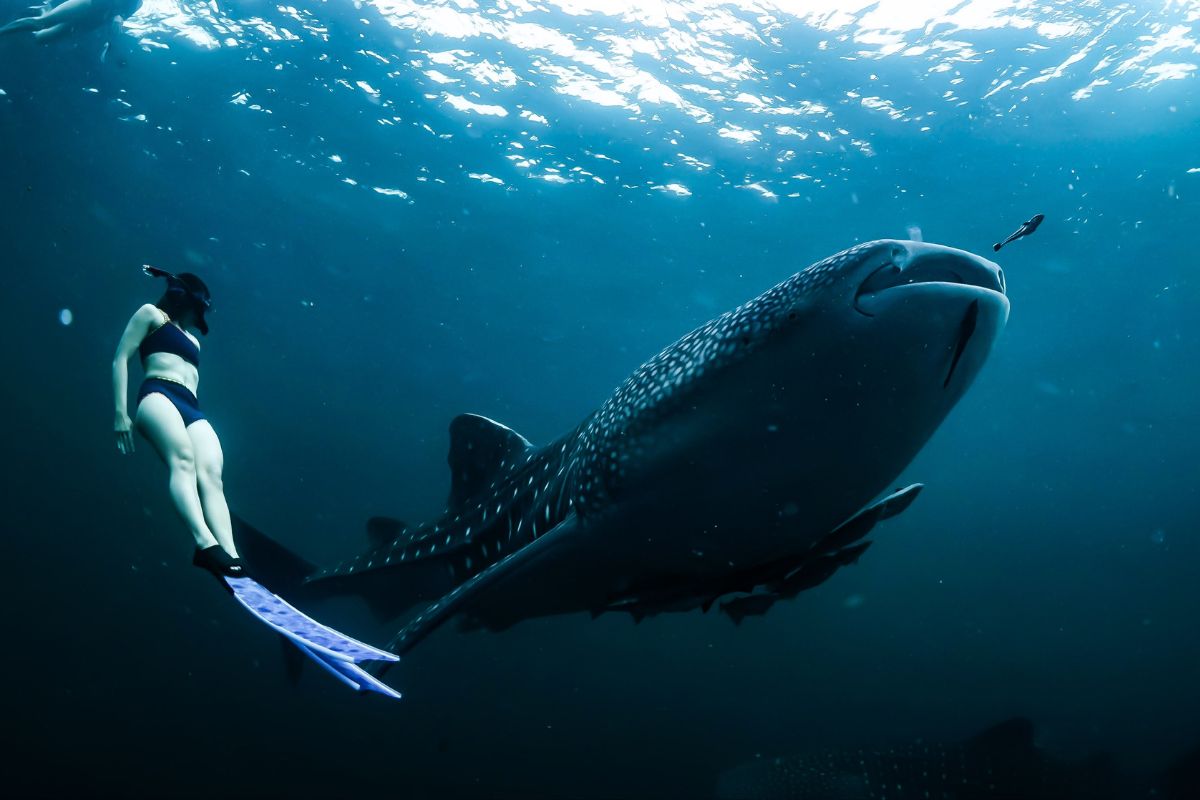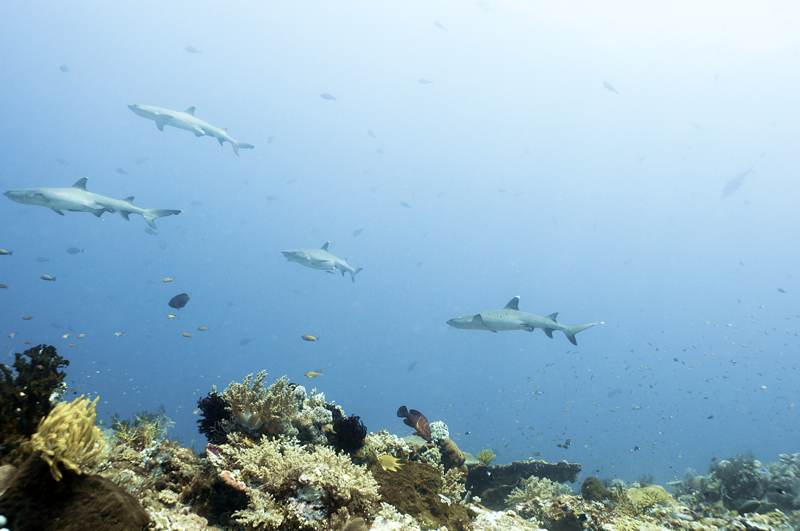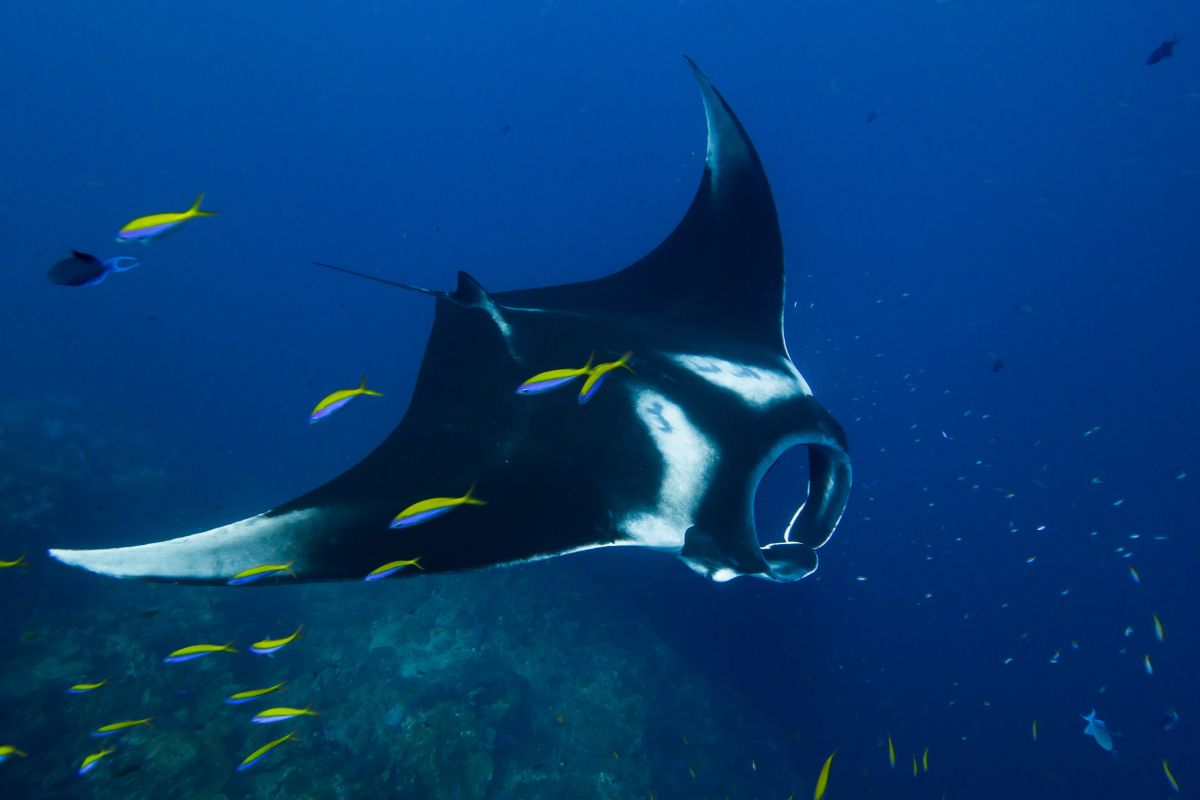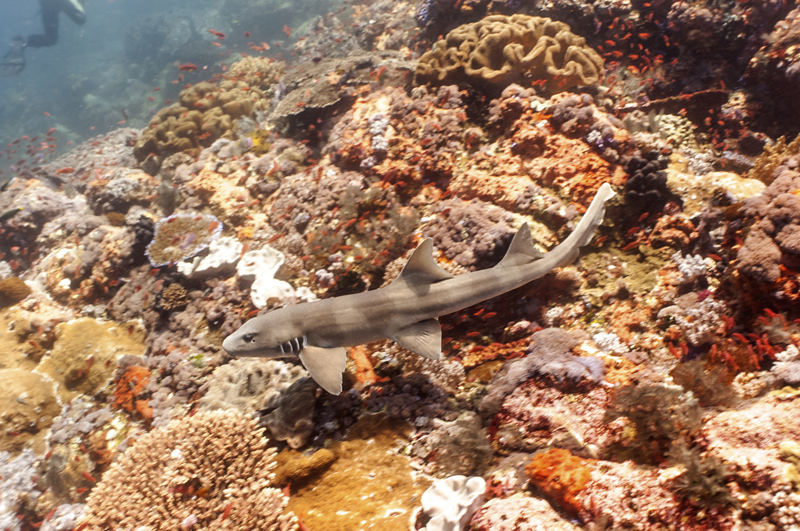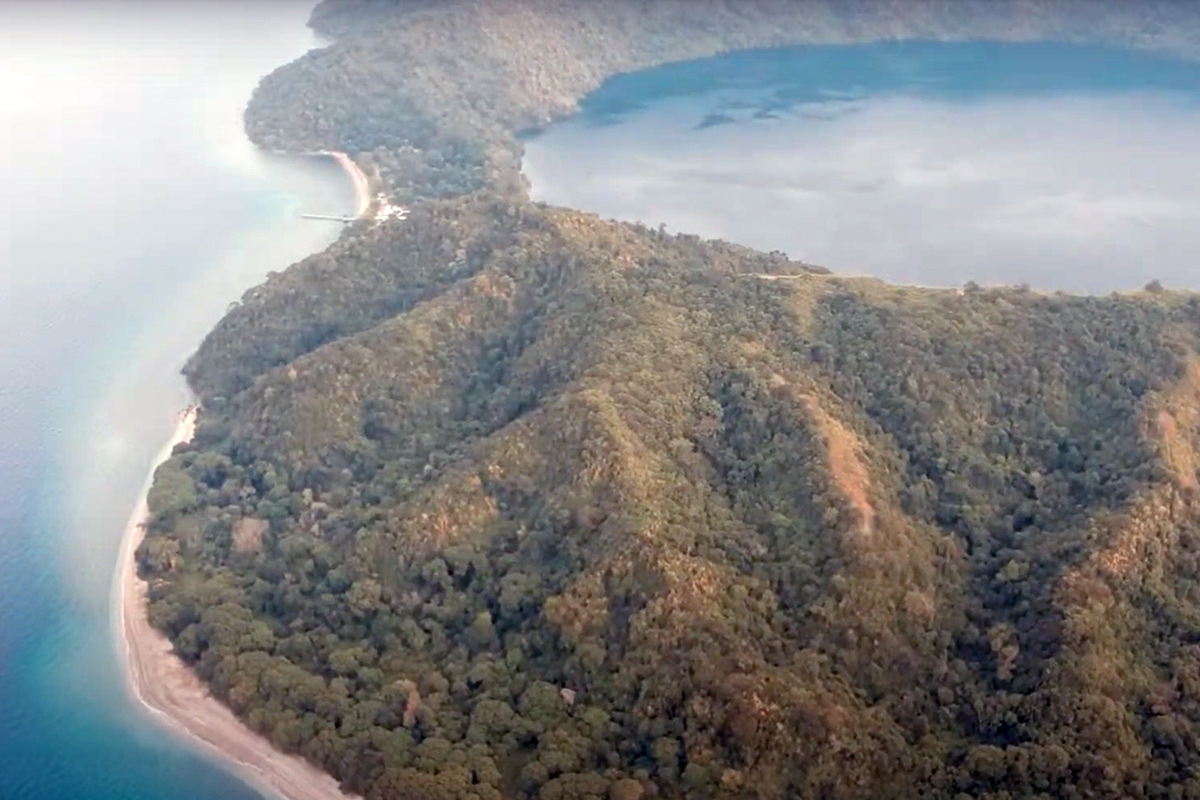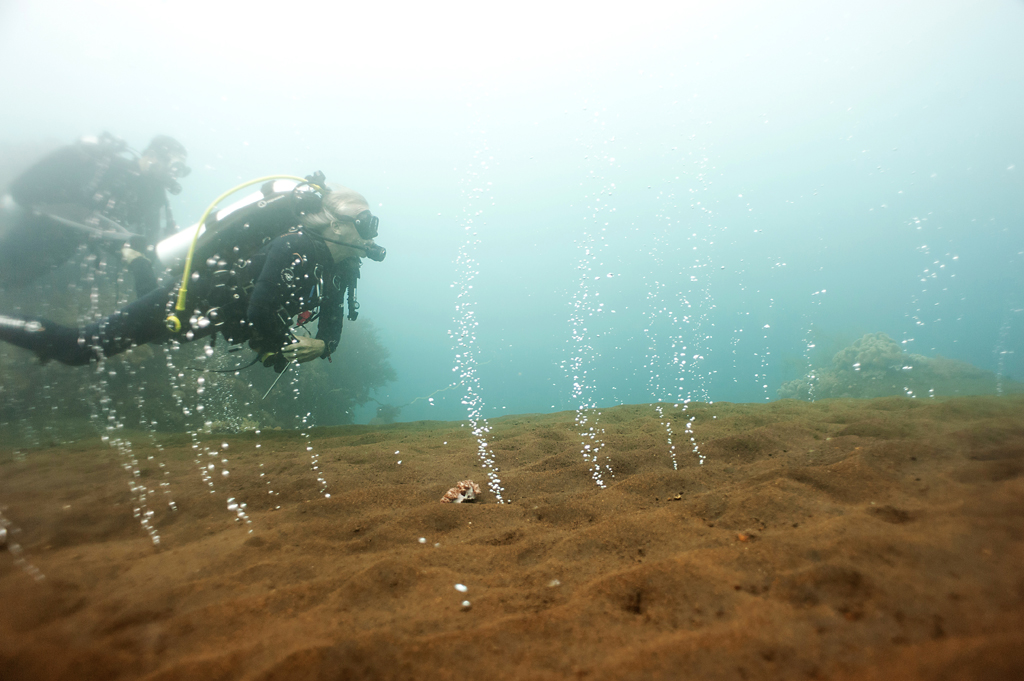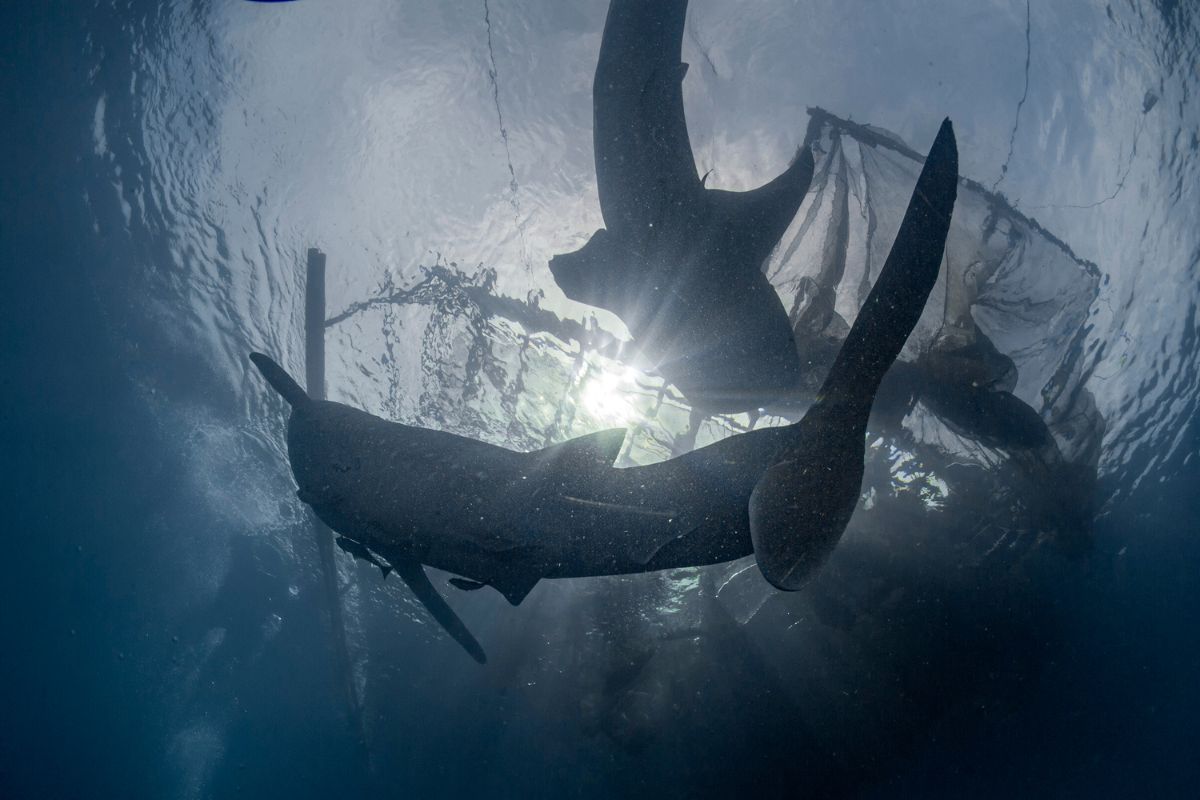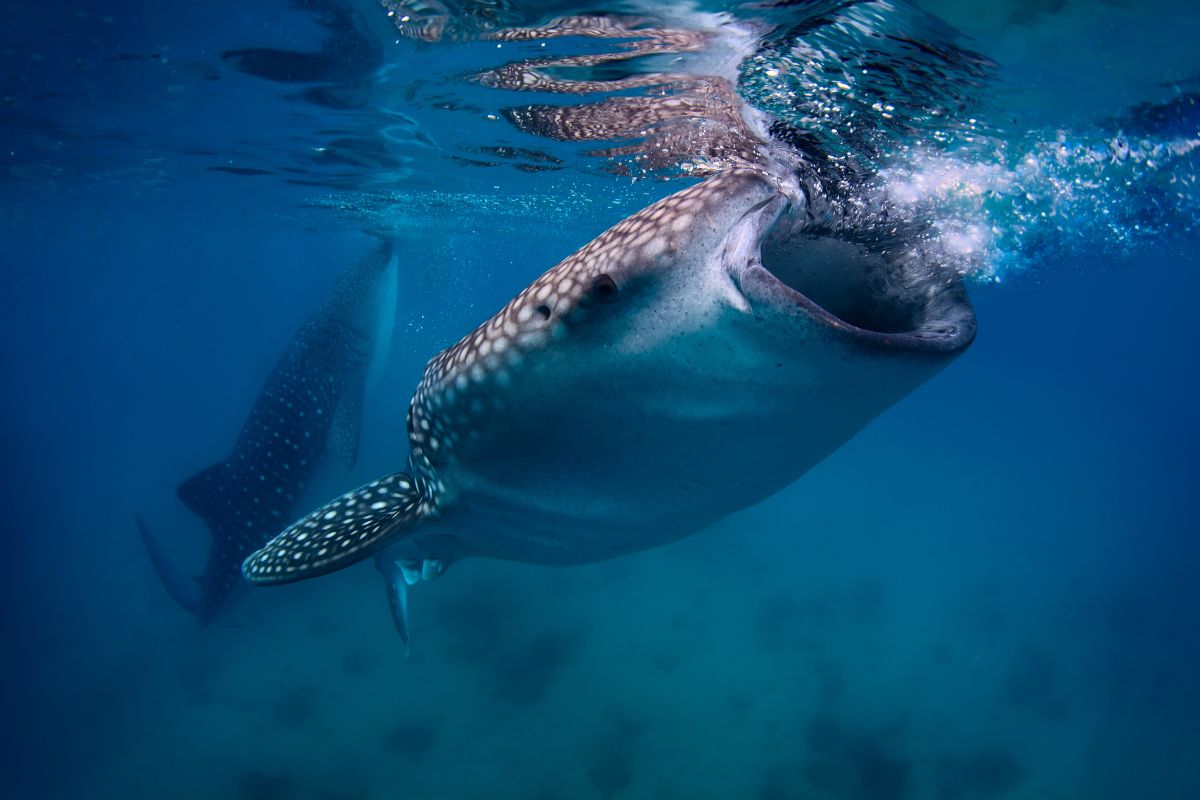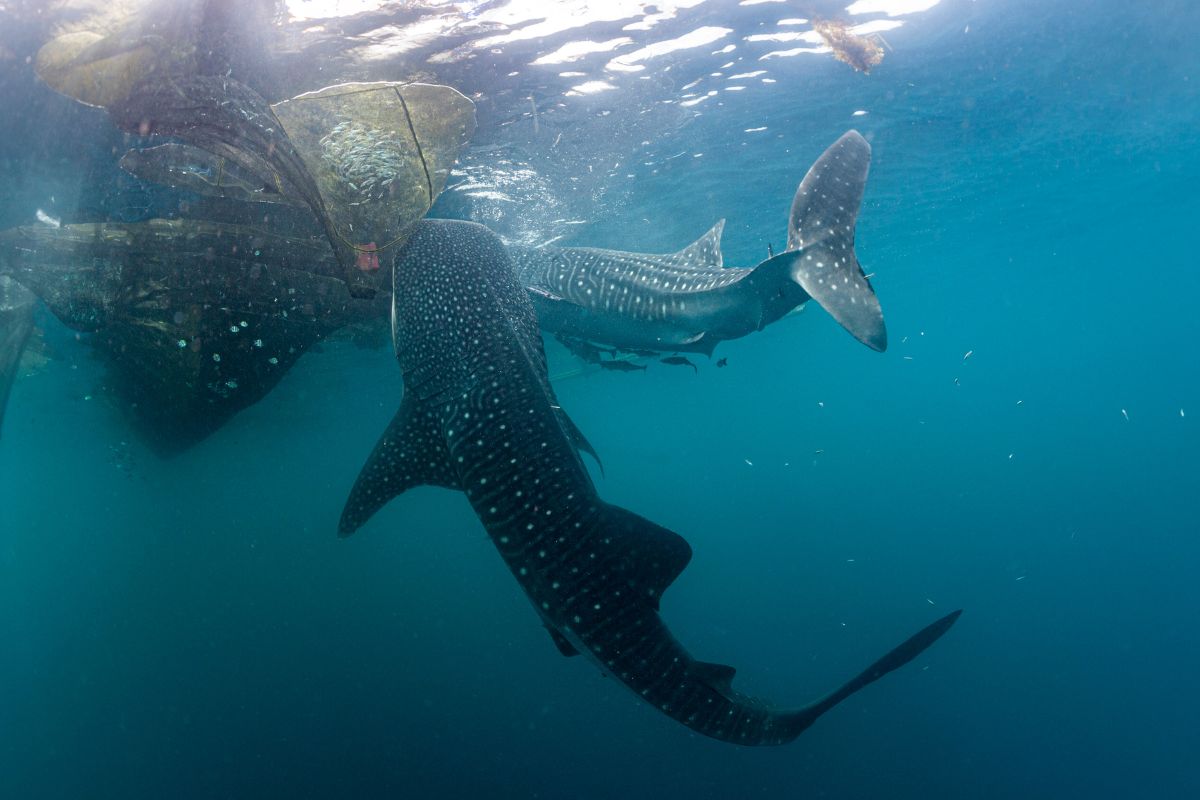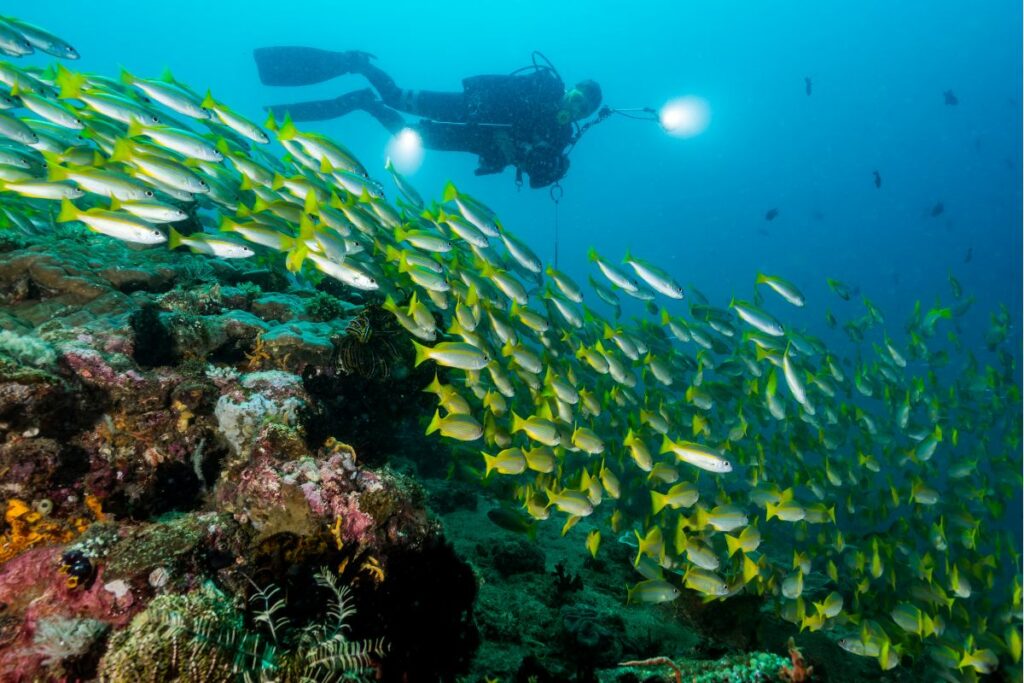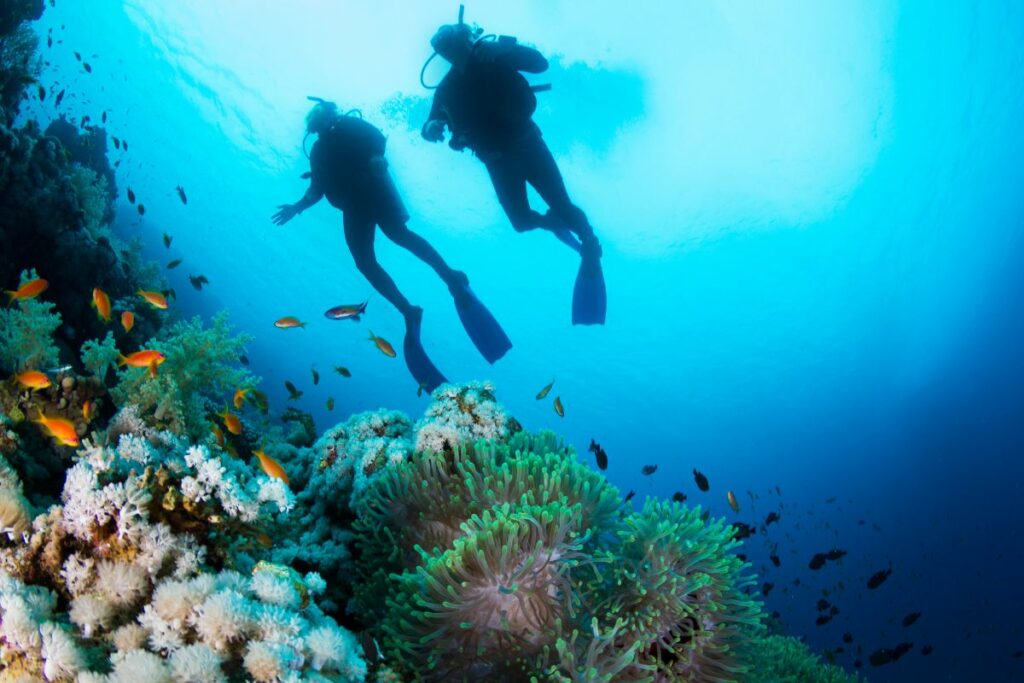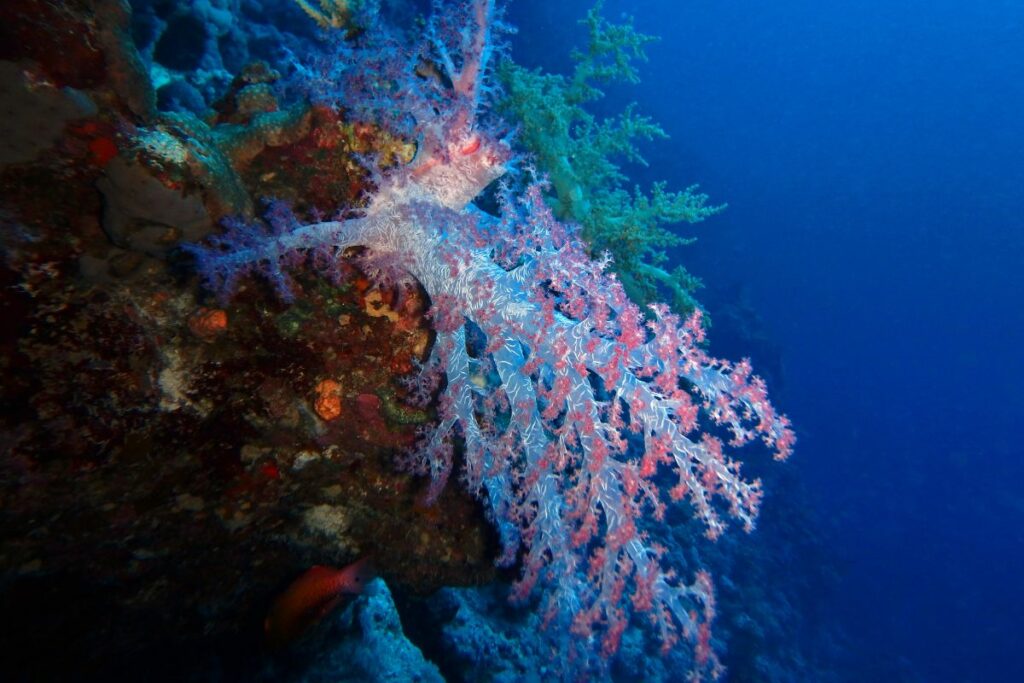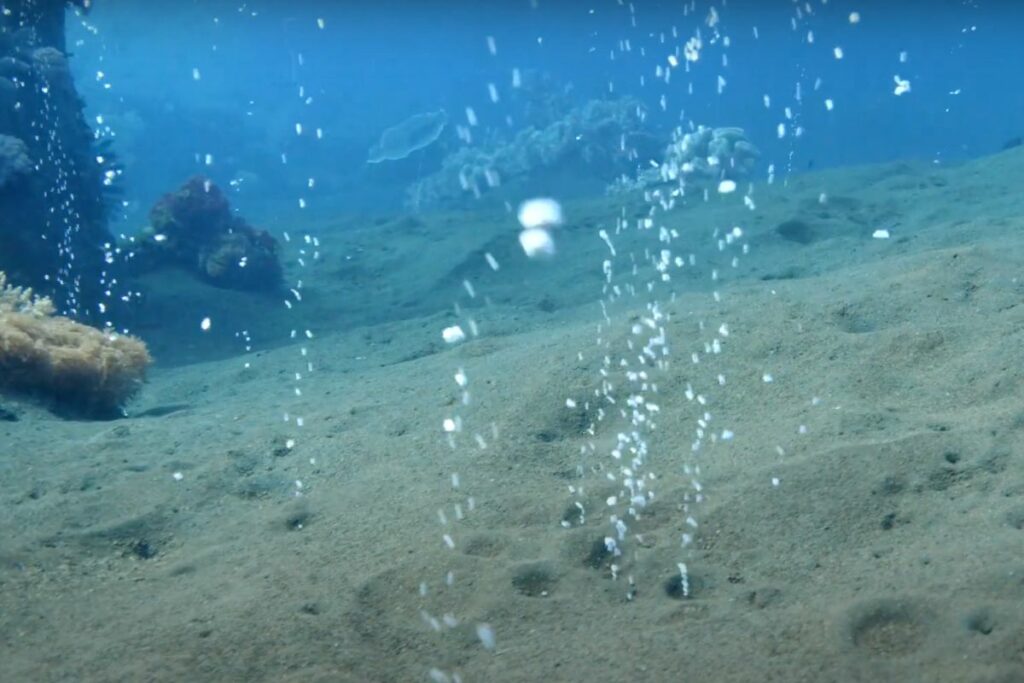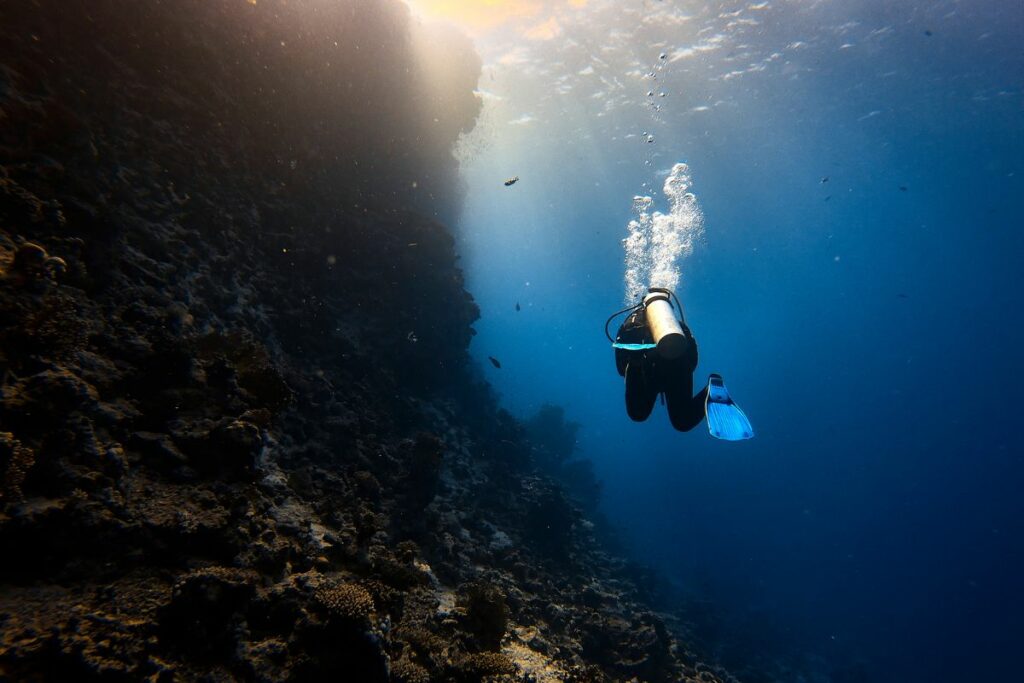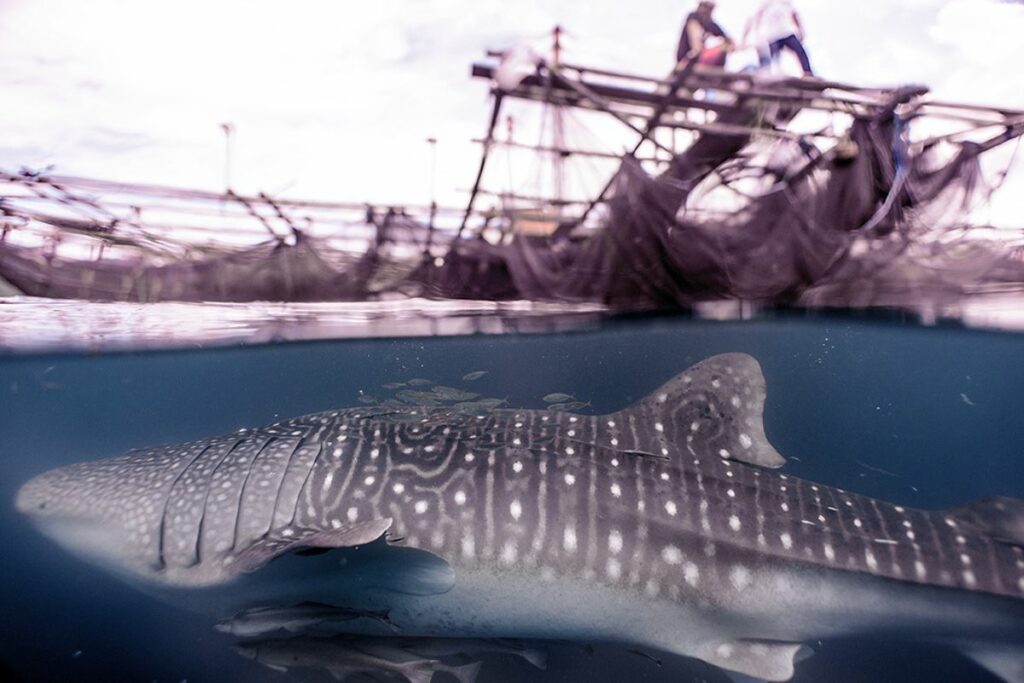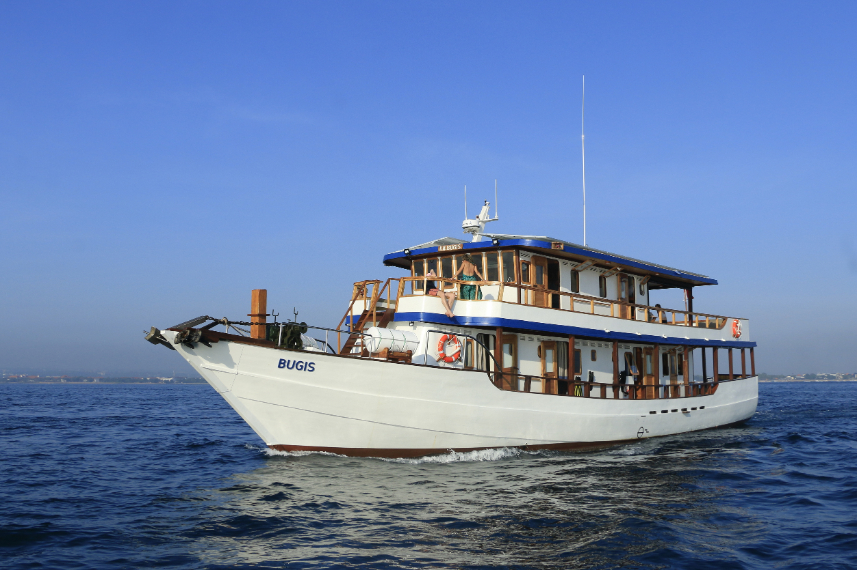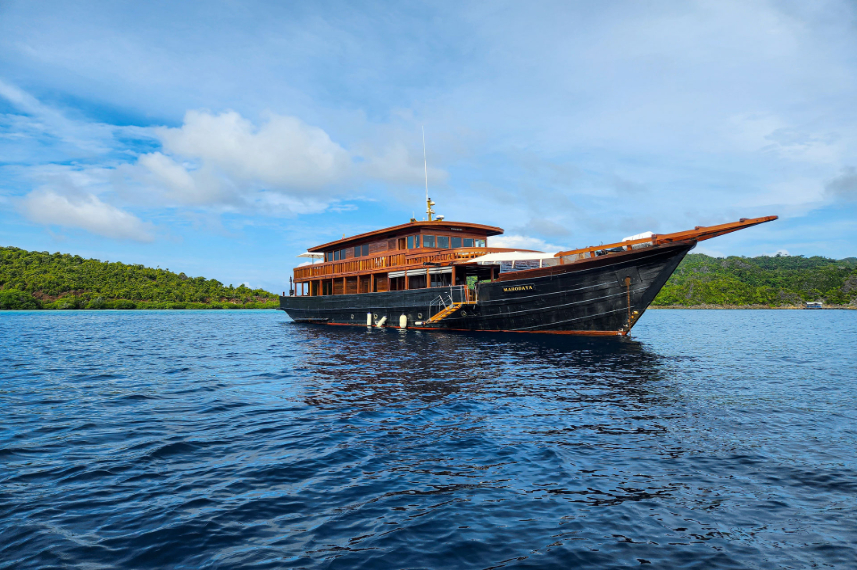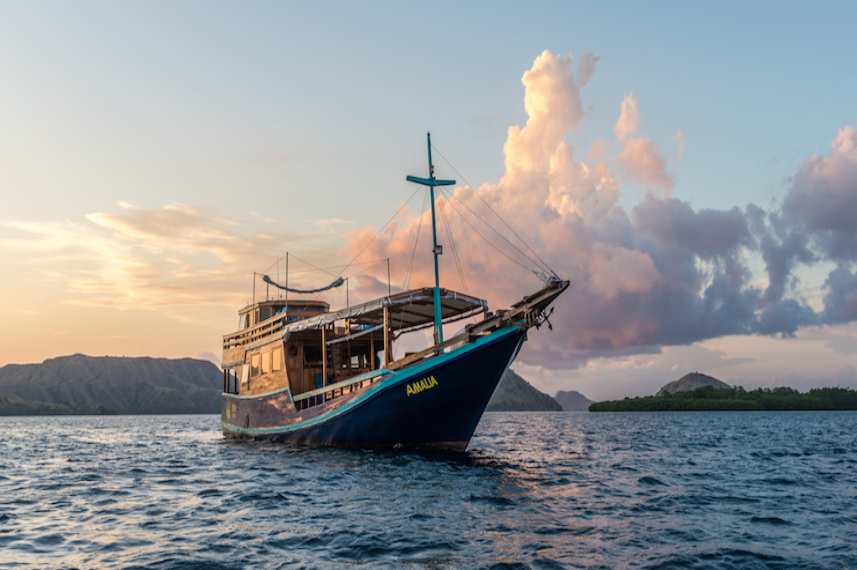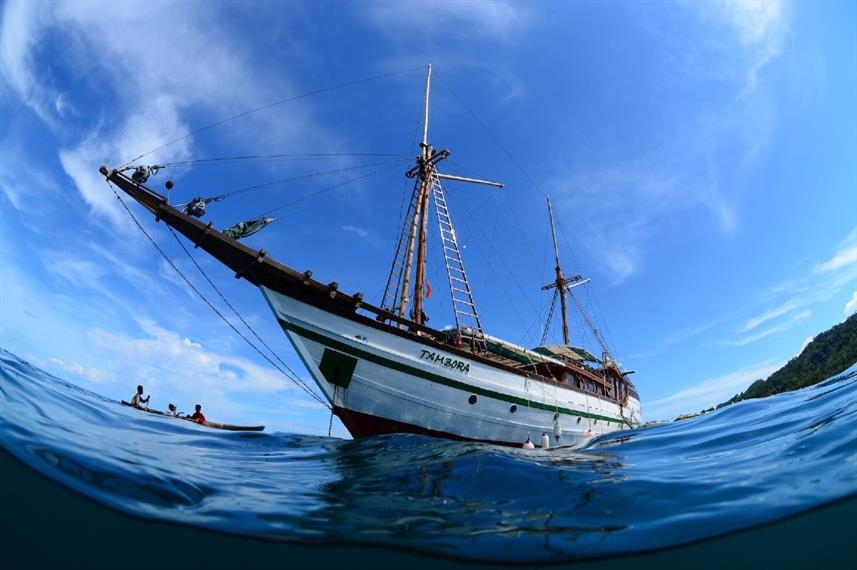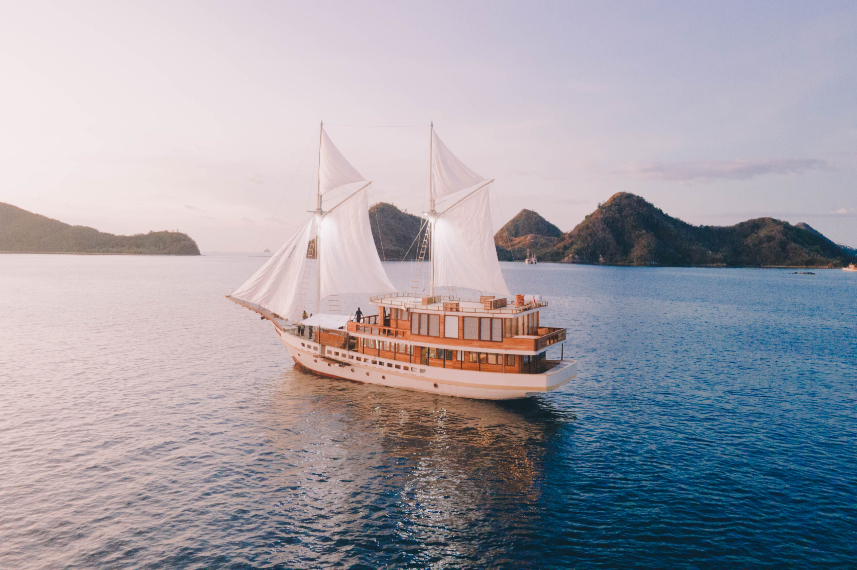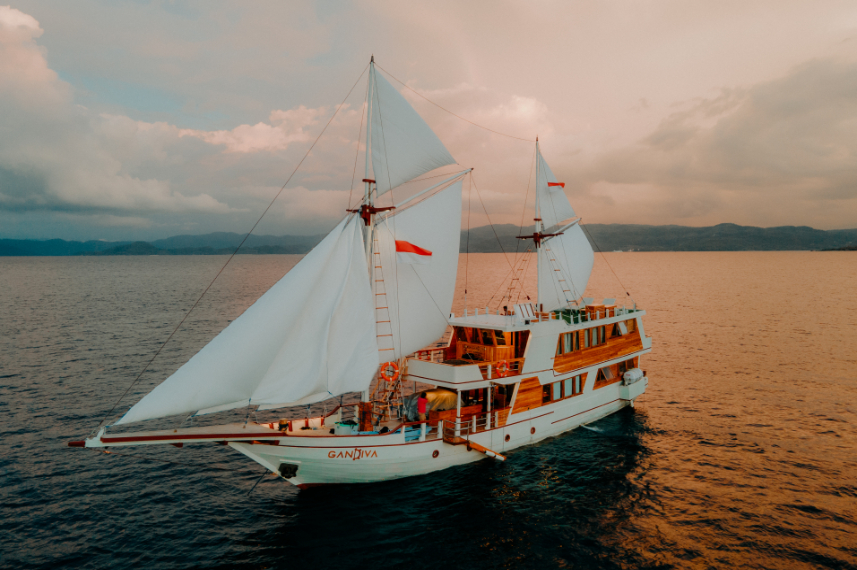Sumbawa
Sandwiched between two islands of Lombok and Komodo, Sumbawa offers something different than any other dive site in the Lesser Sunda Islands. The historic yet devastating Tambora eruption in 1815 has made Sumbawa one of the exciting locations to visit.
From the semi-permanent presence of whale sharks to a freshwater lake where you can spot rare clown frogfish, the underwater world of Sumbawa is as spectacular as the one in Komodo or Lombok.
The active volcanoes in the area offer a distinctive experience because you will see the volcanic gas bubbles emanating from the seabed and the black volcanic sandy bottoms as the backdrop for the colorful species of marine life.
Do not pass up the opportunity to stop by Sumbawa, as no place in the Lesser Sunda Islands has a complex history with nature like this place.
Top highlights of Sumbawa
- Put Saleh Bay at the top of your list, as this is the only region in the Lesser Sunda Islands where you can dive and swim with the whale sharks
- Explore the blacky sandy bottom of Sangeang Island while admiring the volcanic gas bubbles from its seafloor due to volcanic activities
- Be mesmerized by the unique underwater crater lake on Satonda Island, which has more salinity than regular seawater
- Dive in Gili Banta, where the Indian and Pacific Ocean meets and encounter different species of sharks and manta rays
- Sumbawa Island is one of the regions where you can combine the trip to Lombok and Komodo Island by Liveaboard
About Sumbawa
When people talk about Lombok, most rarely mention that Sumbawa Island is also part of the same province, West Nusa Tenggara. Due to its geographic location, which is closer to Komodo Island, Sumbawa is often overlooked as a tourist destination.
The most famous thing about Sumbawa Island is the presence of Mount Tambora. As one of the active stratovolcanoes in Indonesia, the eruption in 1815 is still considered one of the most destructive eruptions ever recorded. Around 71,000 casualties were reported, and 1816 was known as “A Year Without Summer” due to the eruption’s impact in the northern hemisphere. Climate abnormalities caused the decrease in average global temperature, resulting in significant food shortages due to harvest failures.
Nowadays, people visit Sumbawa for the indigenous culture and its underwater paradise.
Diving in Sumbawa
Most divers overlooked Sumbawa due to its proximity to Komodo Island, and they certainly are missing the beauty that Sumbawa has in store.
Soft and hard corals formed coral gardens and covered the slopes and walls of some of the dive sites in the area. Due to active volcanoes in several spots, this led to the black sandy seabed, a perfect backdrop for the colorful sea fans and gorgonians.
Head to Saleh Bay, where you can dive and swim with the whale sharks. The bay has been declared the second-highest whale shark population in Indonesia. It is reported there are close to 100 whale sharks in the area, though they are semi-permanent. Local communities, government, and conservation groups even formed conservation for this endangered species in Labuan Jambu.
Aside from the whale sharks, your diving exploration in Sumbawa will ensure you encounter different species of octopuses, nudibranchs, frogfish, reef sharks, manta rays, and turtles.
Your diving experience will be elevated on Sangeang Island. Due to the volcanic activity of Sangeang Api—one of the active volcanoes in the Lesser Sunda islands—you can see gas bubbles from the sea floor. The black and volcanic reefs add incredible contrast to the colorful corals and marine life.
Discover your next adventure in
Saleh Bay, The Home of The Gentle Giant of The Ocean
Aside from Cenderawasih Bay in West Papua, there is an area in Sumbawa where you can dive and swim with the whale sharks. Though their presence in Saleh Bay is semi- permanent—unlike the ones in Cenderawasih Bay—the whale sharks feed off the local fishermen’s nets. Due to this nature, Saleh Bay has been declared as the second-largest population of whale sharks in Indonesia.
The local community, government, and conservation organizations in Sumbawa even created a whale shark conservation in Labuan Jambu for those interested in knowing more about the effort to save this endangered animal.
Though it can be seen all year long, the best period to see a group of whale sharks in Sumbawa is from July to November.
The prospect of observing this gentle giant is, of course, exciting, but there are a few things to be paid attention to, such as:
- Please do not touch the whale shark, even if they are known to be non-aggressive creatures, as the touch can be considered a threat
- Keep the distance at a minimum of three meters from the whale sharks
- Each group of divers are given 15 minutes to dive alongside the whale sharks
Diving Environments in Sumbawa
With some of the volcanic presence in the area, diving in Sumbawa is colored by the dramatic wall dives, which reach up to over 40 meters, and also the perfect site for muck diving, especially around Sangeang Island.
The visibility of the waters around Sumbawa is considered excellent, especially during the dry season, which lasts from April to November. The average visibility is within 10 to 35 meters. In some dive sites, the visibility even reaches 20 meters. But this superb condition doesn’t apply in the wet season due to choppy surfaces and constant rainfall.
The water temperature in Sumbawa is constant all year long. The average temperature ranges from 26 to 29 degrees Celsius, making it comfortable to wear a short wetsuit.
The depth in the region varies, but some of the sites go beyond 40 meters deep, and even though exciting as this is where some pelagic fish and deeper water creatures reside, the currents can also be strong, and it means only dedicated to intermediate and advanced divers are allowed to dive here.
Please follow the instructions of your dive operators, as they know not only the best conditions but also ensure a safe diving environment for you.
Discover your next adventure in
How to get to Sumbawa
Lombok should be your main entry before exploring Sumbawa, as it is located in the same province, West Nusa Tenggara. Here are your options to go to Sumbawa.
By plane
You can catch a flight from many main cities in Indonesia to Lombok International Airport and then continue your journey to either Bima or Sumbawa Besar by plane or ferry, as only those two cities have regular air service. Traveling by plane only takes about 30 minutes, while a ferry can take up to 2 hours from Lombok.
By Ferry
If you’re feeling adventurous, you can also take a ferry from Bali to Sumbawa, stopping in Lombok first. The journey takes about 5 hours, and then you must continue by ferry from Lombok to Poto Tano, which takes 1.5 hours. You can then take overland transportation, a 3-hour drive to Sumbawa Besar and 8 hours to Bima.
By Liveaboard
The most sensible way to explore Sumbawa is by liveaboard. This option will allow you to explore remote corners of Sumbawa while combining it with the trip to Komodo Island. The most important thing is you will enjoy every minute of it as everything is taken care of.
Diving Seasons & Weather in Sumbawa
There is no wrong time to dive in Sumbawa, as you can explore any dive site all year. Still, the best season is from April to November, with May to September considered the prime season for diving as the sea surface is generally calm and the weather is dry and sunny.
During the wet season, which runs from December to March, it is still possible to dive, but be mindful of the heavy rainfall and the rough water surface, and these conditions contribute to the limited visibility underwater.


